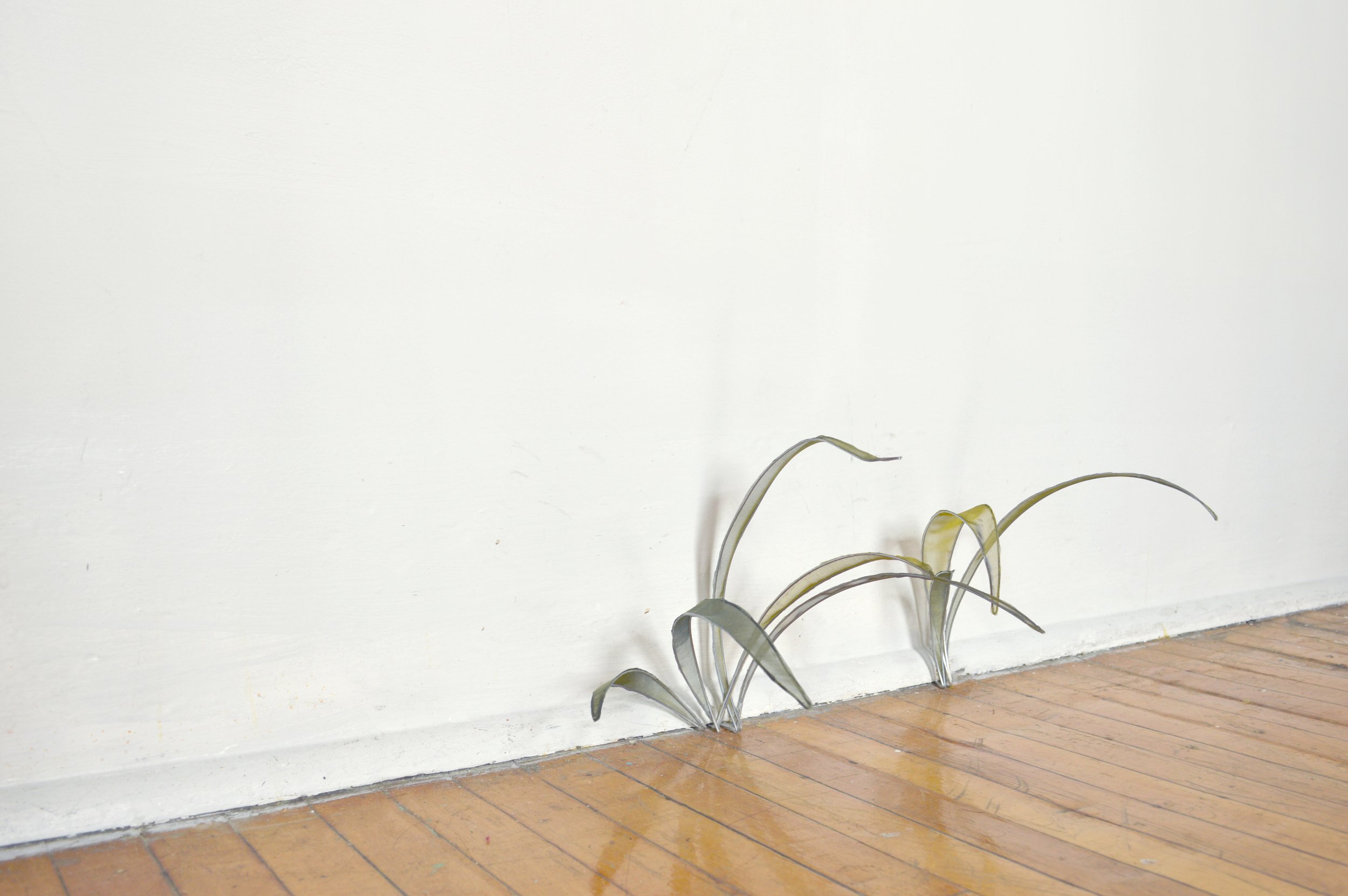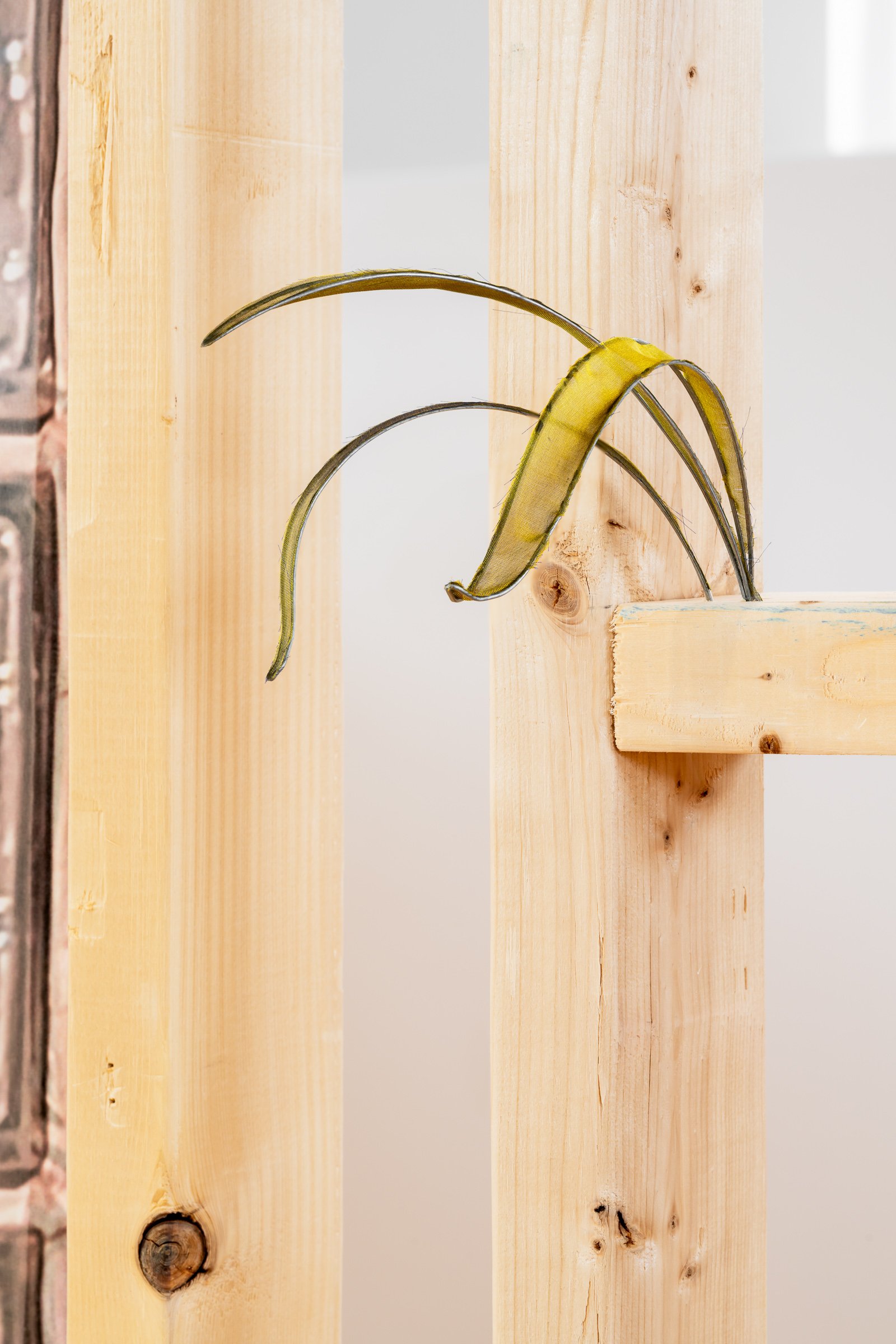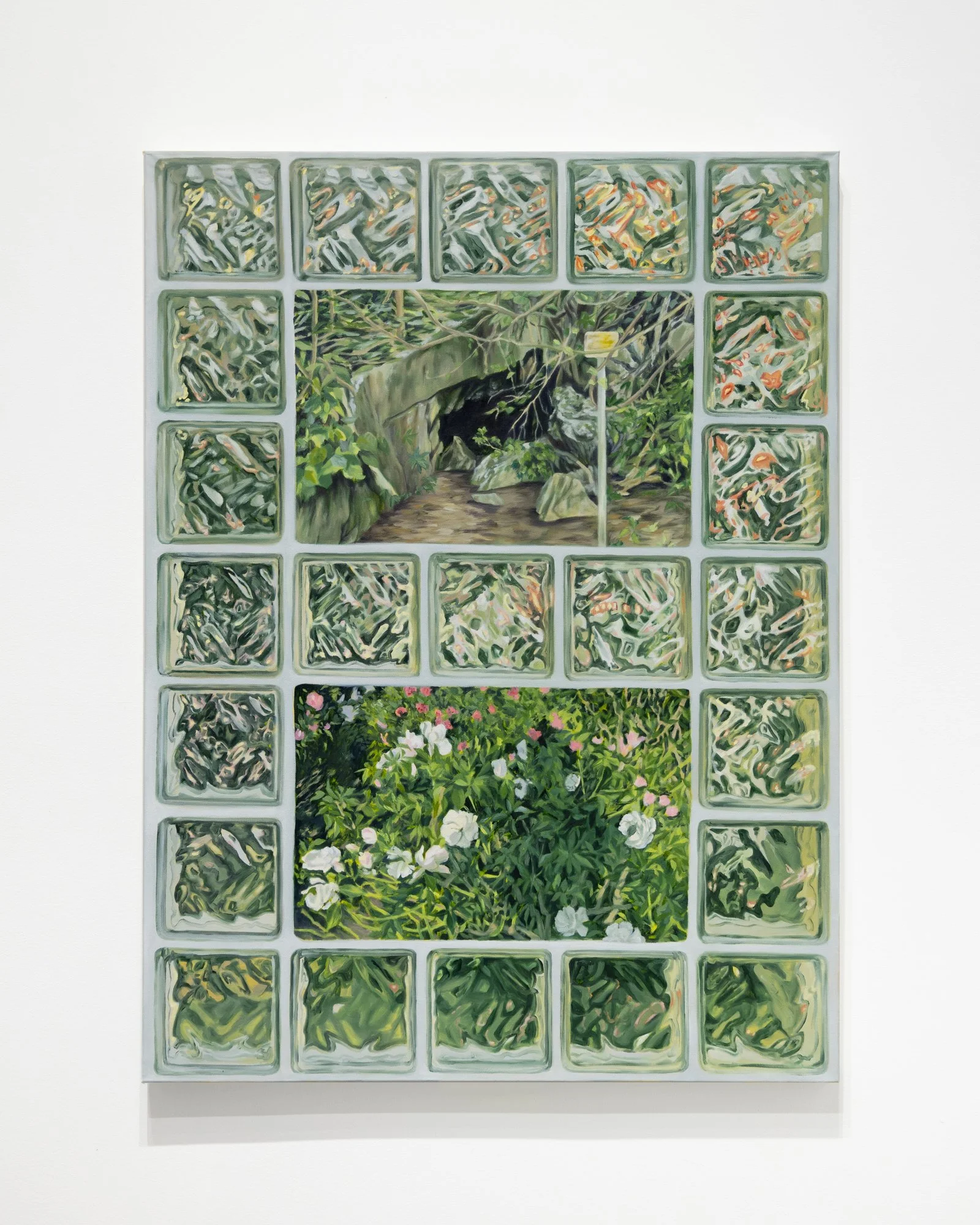
Do Weeds Still Grow in Heaven?
‘Do Weeds Still Grow in Heaven?’ features the kinship of weeds with racialized queerness/transness, viewed as undesirable or unorganizable excess. As a taxonomic category, weeds are not an actual species of plant, but a behaviour of appearing and thriving in a place where they are unwanted. The exhibition then looks inwards: the treatment of weeds can mirror the experience of abuse in queer relationships. It is a subject often cast aside in the narrow celebratory refrain of queer love–a flawed but strategic way of advocating for belonging. The allusion to ‘heaven’ emerges from this common tactic of hinging hope on a queer utopia. It also nods to the popular use of Belinda Carlisle’s 1987 song Heaven is a Place on Earth as a sapphic anthem. In revisiting the song again, it finds new meaning in living through survivorship as an afterlife. Rather than displaying evidence, the exhibition examines the loss and recovery of personhood while traversing violence. Across embroidered text, fabric prints, and sculptural installation, these undomesticated interiors become tentatively hospitable containers for disparate weeds to crop up.
An essay about this body of work was written by Casey Mecija. It was also translated into French by Catherine Barnabé.
This exhibition takes place at Gallery 101 (Ottawa) from November 9 to December 14, 2024. It continues at the Southern Alberta Art Gallery (Lethbridge) from January 25 to April 12, 2025. Some artwork was included in group exhibitions The Traces that Remain at MAI (Montreal), measured by hand at Artspeak (Vancouver), and indiscernible thresholds, escaped veillances at the University of Toronto Art Museum.
I would like to thank the generous support of the Canada Council for the Arts, The Ontario Arts Council and Toronto Arts Council in the making of this work.

Installation view of ‘Do Weeds Still Grow in Heaven?’ at the Southern Alberta Art Gallery (SAAG). Photo by Blaine Campbell.

for the cracks
galvanized steel wire, silk, and tape, variable dimensions, 2024

Installation view of ‘Do Weeds Still Grow in Heaven?’ at the Southern Alberta Art Gallery (SAAG). Photo by Blaine Campbell.

Tablecloth and knife
hand-embroidery on printed organza and silk, 49” x 60”, 2023. Photo by Blaine Campbell.

Installation view of ‘Do Weeds Still Grow in Heaven?’ at the Southern Alberta Art Gallery (SAAG). Photo by Blaine Campbell.

PROOF--My uncle's uncle's restaurant
hand-embroidery on printed cotton, 35” x 39”, 2023. Photo by Blaine Campbell

PROOF--My uncle's uncle's restaurant
detail shot, photo by Blaine Campbell

Home and stranger
hand-embroidery on printed organza with printed linen on wooden frame, 27” x 39.5”, 2023. Photo by Blaine Campbell.
Text reads: which came first, the home or the stranger

Home and stranger
detail shot, photo by Blaine Campbell

for the cracks
sink on metal wire, set of 80, variable dimensions, 2024. Photo by Blaine Campbell.

Installation view. Photo by Blaine Campbell.

oil on canvas paintings set into wooden frames with dried grasses and cut mylar. Photo by Blaine Campbell.

Breathing Room i
oil on canvas with wooden frame, dried grasses, and cut mylar. Photo by Blaine Campbell

cut mylar installation
photo by Blaine Campbell

Breathing Room i
oil on canvas, 40” x 30” x 0.75”, 2024

Self-Portrait as Interior, Garden, Afterlife
oil on canvas
40” x 30” x 0.75”
2024

Veiled
oil on canvas
40” x 30” x 0.75”
2024
Acquired

Breathing Room ii
oil on canvas, 36” x 24”, 2024

History as Decoy i
oil on canvas
40” x 30”
2025

History as Decoy ii
oil on canvas
40” x 30”
2025

History as Decoy iii
oil on canvas
40” x 30”
2025

for previously unlightable spaces iii
printed silk on wooden dowels, installation view, photo by Blaine Campbell.

installation detail, photo by Blaine Campbell

The Weeds
hand-embroidery on printed organza, 48” x 36”, 2023. Photo by Blaine Campbell

The Weeds
detail shot, photo by Blaine Campbell

PROOF--Bedroom in Scarborough
hand-embroidery on printed cotton, 37” x 57”, 2021. Photo by Blaine Campbell.

Installation view of ‘Do Weeds Still Grow in Heaven?’ at the Southern Alberta Art Gallery (SAAG). Photo by Blaine Campbell.

Whole to me
hand-embroidery on printed cotton gauze, 33.5” x 40”, 2023. Photo by Blaine Campbell.

Do Weeds Still Grow in Heaven, exhibition vinyl at Gallery 101. Photo by Maryn Devine

Installation view
Detail of the installation at Gallery 101, photo by Elayna Lee-Young


Installation view. Photo by Maryn Devine.

WE ARE NEVER JUST ONE PERSON
hand-drawn posters photocopied and collaged on the front window of Gallery 101. Photo by Maryn Devine.

The Traces That Remain
Group exhibition curated by eunice bélidor. Installation with embroidered printed fabric and 2x3 spruce at MAI, Montreal, QC, May 2—June 15, 2024.

Whole to me
hand-embroidery on printed cotton gauze
40” x 33.5”
2023
[Text reads: you have always been whole to me]
Acquired

Tablecloth and knife
60” x 49”
hand-embroidery on printed organza and silk, 2024.
text reads: “like describing a crime scene by the pattern of the tablecloth rather than the size of the knife”

Installation at Artspeak (Vancouver, BC) as part of duo exhibition, measured by hand, with Vitória Monteiro curated by the Dirty Dishes Collective.

Too Early
89” x 58”,
hand embroidery on printed cotton with ladder blinds and balsa wood, 2024. Documentation of group exhibition 'indiscernible thresholds, escaped veillances,' curated by Dallas Fellini at the Art Museum at University of Toronto. Photo by Toni Hafkenscheid.

Too Early
detail of hand-embroidery

every time I remember to call my grandmother
made for the exhibition ‘Et dis-moi : why is the past tense always longer’ at Stewart Hall Gallery, curated by Maude Hénaire.
Hand-embroidery on printed organza, set of two, each 5’ x 9’


So much for slowness
hand-embroidery on linen,
45” x 28.5”
2023
*the image depicts the work not installed in ideal conditions, just in the studio









































